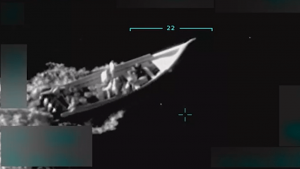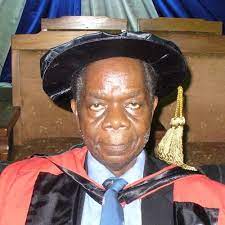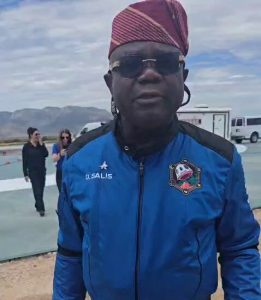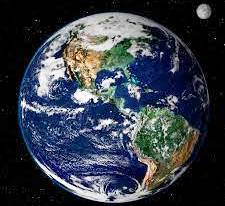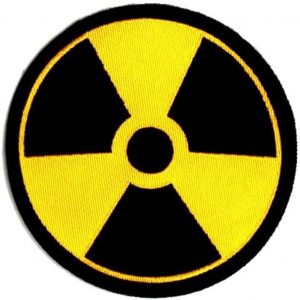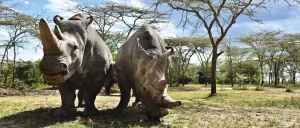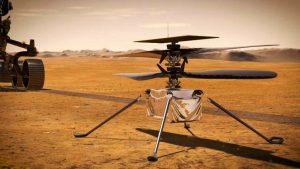
A Nuclear Power Plant (NPP) applies heat from a controlled nuclear chain reaction – in the Core of its reactor – to produce steam which drives its turbine and generates electricity.
The government of Nigeria approved a nuclear framework for the country to generate electricity from nuclear energy for national development under President Olusegun Obasanjo in 2007.
This involves:
- Manpower development which is ongoing in energy centres in Zaria, Ile-Ife and some universities as well as in the National Institute of Radiation Protection and Research in the University of Ibadan offering Masters degree and Postgraduate diploma in radiation protection;
- Site selection, Design, Approval and Licensing; and finally,
- Construction and Operation.
The Siting stage involves 13 criteria ranging from availability of a natural body of water; seismicity, especially how volcano or earthquake-prone the site is; distance to densely populated area; wind direction etc.
Nigeria is at this stage and has two candidate sites, awaiting final approval, for a possible first nuclear power plant for electricity generation.
The International Atomic Energy Agency, IAEA, in 2009, certified Nigeria to have passed the minimum manpower threshold.
However, there are still the design, construction, commissioning stages with all the approvals to go with them.
The focal agency, the Nigeria Atomic Energy Commission, NAEC, was created by Act 46 in 1976 which was later amended in 2004.
NAEC however, became fully operational in July, 2006 with Dr Erepamo Osaisai as its pioneer Chief Executive.
Its function as operator is to promote the peaceful use of atomic energy in Nigeria (Nigeria is one of the first countries to sign the Nuclear Non-Proliferation Treaty in 1968).
In March 2011, NAEC was re-constituted and even made more independent with Dr Erepamo Osaisai as Executive Chairman and it vigorously started pursuing the nuclear electricity programme.
The nuclear industry is one of the most regulated in the world with the IAEA at the global level.
In Nigeria, the Nigerian Nuclear Regulatory Authority, NNRA, came into being in May, 2001 created by the Nuclear Safety and Radiation Protection Act (Act 19) of 1995 with Professor Shamsideen Elegba as its pioneer Director-General.
Professor Elegba worked hard to ensure the independence of NNRA, bravely refusing to be placed with the government-owned operators under the Federal Ministry of Science and Technology.
A nuclear regulator must be independent of the operator to avoid conflict of interest.
He also insisted that no stakeholder in the nuclear industry in Nigeria should operate below approved minimum standards.
This led to the commissioning of the 340-kilocurie Cobalt-60 Gamma Irradiation Facility in Sheda, near Abuja, by then Nigerian President Olusegun Obasanjo being postponed slightly, before it was finally licensed by NNRA and commissioned in 2006.
Under Professor Elegba, the NNRA also successfully licensed the 30kw Neutron Research Reactor, the Nigerian Research Reactor (NIRR-1), in the Centre for Energy Research and Training, Zaria, which has been operating without incident or accident since 2004.
All radioactive sources imported into Nigeria are by law returned to the country of manufacture after their useful life (to be recycled or appropriately disposed) before its inventory is closed by the NNRA.
So, there is no real problem of nuclear waste disposal in Nigeria.
Nuclear phobia after the non-peaceful use of atomic energy in the Hiroshima and Nagasaki bombs of World War 11 can be a problem anywhere, not just in Nigeria.
The latest accident in the three Daiichi reactors in Fukushima, Japan, on 11 March, 2011, following a 15-metre-high tsunami, exacerbated the problem.
All nuclear power plants in Japan are built on earthquake-proof technology.
The plant automatically shut down successfully following the earthquake and was not damaged.
Since it no longer generated power, diesel electricity generating sets came on automatically to pump water to cool the residual heat in the Cores.
The tsunami that followed however, inundated the area and the generating sets, cutting off power to the water pumps.
The over-heating that ensued caused a Core meltdown in the three reactors and minor radiation leaks.
The tsunami drowned and killed 15,893 people, but no one died from radiation.
Two plant workers suffered some radiation burns and another 37 suffered physical injuries.
The World Health Organisation in 2014, said there was no increase in miscarriages, still births or physical and mental disorders in babies born after the accident.
The Daini plant with four reactors operated by the same company, Tokyo Electric Power Company, 12 kilometres (7.5 miles) away from the three Daiichi reactors, also automatically shut down on the earthquake but suffered no damage from the tsunami.
The worst accident in nuclear power generation in the world is the fire in Chernobyl Nuclear Power station, a Light Water Graphite reactor, on April 26, 1986 in which about 30 people died, 300 suffered radiation sickness and another 3,000 developed (a mild form of) Thyroid cancer.

The others were in Tokai-Mura in Japan in 1999; Core Meltdown at the Three Mile Island in U. S. in 1979; and the first of such accidents in the world in Windscale, U. K., from an early Plutonium Production reactor in 1957.
These are the only accidents since the first commercial nuclear plant for electricity generation, the APS-1, in Obninsk, Russia, with an output of 5mw was connected to the national grid on 26 June, 1954.
The Chernobyl plant fell short of requirements as it had only steel roofing, not one-metre thick steel re-enforced concrete or Lead, and cannot be approved today by any regulatory authority.
In the Chernobyl case, one experiment was approved by the Russian regulatory authority just before the accident. When the expected results were not obtained, the researchers, without another authorization, went on to repeat the experiment and shut down some of the safety devices.
There was overheating and explosion which the Containment Building – a re-enforced concrete/lead structure housing the Core and its protective Pressure Vessel – could not contain, being substandard.
Both Chernobyl and the Tokai-Mura plants were Light Water Graphite reactors which are not being produced again as well as the reactor in Windscale, UK.
More people die in mining, oil exploration and dam accidents to power other sources of electricity than in nuclear incidents in the world.
The burst/failure in Banqiao Reservoir Dam on the Yellow River in China in 1975 killed 171,000 people.
On the average 15,000 miners are killed every year.
On 28 April, 1942, 1,549 lives were lost in the colliery accident in Benxi, China.
In the US, 362 miners were killed in the underground mine explosion in Monongah, West Virginia, on 6 December, 1907.
Nuclear safety and radiation protection is not new to Nigerian scientists.
Nigerians have been managing the Research Reactor, NIRR-1, in Zaria, which used fissile Uranium-235 since 2004, without any accident or incident, to the satisfaction of NNRA and IAEA.
Led by the reactor manager, Professor Sunday Jonah, they successfully converted it from using weapon-grade Highly Enriched Uranium (90.2% enrichment level) to Low Enriched Uranium of 13% in 2018.
What is the best way forward?
Countries with huge oil deposits like UAE, Venezuela, Libya, Iran and Saudi Arabia are into nuclear electricity, diversifying their energy mix.
If Nigeria needs to make a quantum-leap into industrial development, the nuclear electricity option to power that growth may be it.
pictures courtesy: india today, iea
FULLER VERSION – NUCLEAR ENERGY IN NIGERIA: NUCLEAR POWER PLANTS
A Nuclear Power Plant (NPP) applies heat from a controlled nuclear chain reaction in its Core to a turbine to generate electricity.
The first NPP to be used for commercial electricity generation is the APS-1 with an output of five megawatts (mw) at Obninsk, Russia. It was connected to the national grid in 1954.
The different types of NPPs are: Pressurized Water Reactor (PWR), Boiling Water Reactor (BWR), Gas-Cooled Reactor, Pressurized Heavy Water Reactor, Light Water Graphite Reactor, Fast Breeder Reactor, Propulsion Reactor, Research Reactor, Advanced Reactor, and Fusion Reactors which are yet to be used in commercial electricity generation.
All nuclear power plants used for commercial electricity generation in the world today operate by nuclear fission.

The main components of NPPs are: a) Moderator This is a material, usually water, heavy water (Deuterium Oxide) or graphite that slows down the neutrons released from fission to enhance the chain reaction. b) Control Rods These are made with neutron-absorbing materials like Cadmium, Boron and are inserted or withdrawn from the Core to control the rate of reaction or halt it. The chain reaction ceases to be self-sustaining when more Neutrons are no longer available to sustain it. c) Secondary Shutdown Systems This usually involves a device for adding other neutron absorbents to the system. In PWR, more Boron is added and in advanced reactors Nitrogen is injected into the coolant as additional shutdown precaution. d) Coolant This, as the name implies, cools the reactor Core and avoids overheating. e) Pressure Vessel A robust steel container housing the reactor Core and Moderator/Coolant. f) Steam Generators Part of the Cooling System which transfers heat from reactor to make steam for the turbine. g) Containment Building Concrete, steel re-enforced, structure housing the reactor Core and Pressure Vessel. Should everything fail, including the Pressure Vessel, the Containment Building will “contain” the radiation until a convenient time that the plant is decommissioned
In the Gamma Irradiation Facility in Sheda, near Abuja, though not NPP, but emits gamma rays, the Cobalt-60 source is stored in a 10 metre-deep water pool when not in use and the Containment Building is one metre thick to stop the radiation from leaking out.
CHALLENGES The latest accident in a nuclear power plant was with the three Daiichi reactors in Fukushima, Japan, on 11 March, 2011 following a 15-metre-high tsunami.
All nuclear power plants in Japan are built on earthquake-proof technology. The plant automatically shut down successfully following the earthquake and was not damaged.
Since it no longer generated power, diesel electricity generating sets came on automatically to pump water to cool the residual heat in the Cores.
The tsunami that followed however, inundated the area and the generating sets, cutting off power to the water pumps. The over-heating that ensued caused a Core meltdown in the three reactors and minor radiation leaks.
For fear of the worst, 154,000 people were evacuated within a 20-kilometre radius of the plant.
The tsunami killed 15,893 people but no one died from radiation. Two plant workers suffered some radiation burns and another 37 suffered physical injuries.
The WHO in 2014, said there was no increase in miscarriages, still births or physical and mental disorders in babies born after the accident.
The Daini plant with four reactors operated by the same company, Tokyo Electric Power Company, 12 kilometres (7.5 miles) away, also automatically shut down on the earthquake but suffered no damage from the tsunami.
The fire in Chernobyl Nuclear Power station, a Light Water Graphite reactor, on April 26, 1986 in which about 30 people died, 300 suffered radiation sickness and another 3,000 developed Thyroid cancer, is the worst accident in a nuclear plant used to generate electricity in the world.
The others were in Tokai-Mura in Japan in 1999; Core Meltdown at the Three Mile Island in U. S. in 1979; and the first of such accidents in the world in Windscale, U. K., from an early Plutonium Production reactor in 1957.
These are the only accidents since the first commercial nuclear plant for electricity generation in Obninsk, Russia, on June 26, 1954.
The Chernobyl plant fell short of requirements as it had only steel roofing, not one-metre thick steel re-enforced concrete or Lead, and cannot be approved today by any regulatory authority which are all overseen by the UN International Atomic Energy Agency, IAEA.
In the Chernobyl case, one experiment was approved by the Russian regulatory authority just before the accident. When the expected results were not obtained, the researchers, without another authorization, went on to repeat the experiment and shut down some of the safety devices.
There was overheating and explosion which the Containment Building, being substandard, could not contain. Both Chernobyl and the Tokai-Mura plants were Light Water Graphite reactors which are not being produced again as well as the reactor in Windscale, UK.

The nuclear industry is one of the most regulated in the world. There is the IAEA monitoring at the global level.
In Nigeria, the Nigerian Nuclear Regulatory Authority, NNRA, came into being in May, 2001 created by the Nuclear Safety and Radiation Protection Act (Act 19) of 1995 with Professor Shamsideen Elegba as its pioneer Director General.
A nuclear regulator must be independent of the operator to avoid conflict of interest.
During his tenure, Professor Elegba worked hard to ensure the independence of NNRA, bravely refusing to be placed with the government-owned operators under the Federal Ministry of Science and Technology.
He also insisted that no stakeholder in the nuclear industry in Nigeria should operate below approved minimum standards.
This led to the commissioning of the 340 kilocurie Cobalt-60 Gamma Irradiation Facility in Sheda, near Abuja, by then Nigerian President Olusegun Obasanjo being postponed slightly, before it was finally licensed by NNRA and commissioned in 2006.
Under Professor Elegba, the NNRA also successfully licensed the 30-kw research reactor in Zaria which has been operating without incident or accident since 2004.
All radioactive sources imported into Nigeria are by law returned to the country of manufacture after their useful life (to be recycled or appropriately disposed) before its inventory is closed by the NNRA.
So, there is no real problem of nuclear waste disposal in Nigeria.
The Nigeria Atomic Energy Commission, NAEC, was created by Act 46 in 1976 which was later amended in 2004.
NAEC however, became fully operational in July, 2006 with Dr Erepamo Osaisai as its pioneer Chief Executive. Its function as operator, is to promote the peaceful use of atomic energy in Nigeria.
In March 2011, NAEC was re-constituted and made more independent with Dr Erepamo Osaisai now as Executive Chairman and it vigorously started pursuing a nuclear electricity programme.
The Federal Government of Nigeria approved a nuclear framework for the country to generate electricity from nuclear energy for national development. This involves:
- Manpower development which is ongoing at CERT, Zaria, CERD, Ile-Ife and some universities as well as in the NNRA’s National Institute of Radiation Protection and Research in the University of Ibadan offering Masters degree and Postgraduate diploma in radiation protection;
- Site selection, Design, Approval and Licensing; and finally,
- Construction and Operation.
The Siting stage involves 13 criteria ranging from availability of a natural body of water; seismicity, especially how volcano or earthquake-prone the site is; distance to densely populated area; wind direction etc.
Nigeria has passed through this stage and has two candidate sites, awaiting final approval, for a possible first nuclear power plant for electricity generation.
The IAEA, in 2008, certified Nigeria to have passed the minimum manpower threshold. However, there are still the design, construction, commissioning stages with all the approvals to go with them.
This writer is not unaware that many government projects have failed due to corruption and bad management in Nigeria.
So, will the nuclear plants be privately-owned like some airlines; or jointly-owned by both private individuals and government?
Furthermore, it is not correct to assume that Nigerians working at home cannot distinguish themselves and excel.
Professor Wole Soyinka won Nobel Prize in Literature in 1986, working in University of Ife (now Obafemi Awolowo University), Ile-Ife, Nigeria;
Professor G. A. Makanjuola working in the same university invented the yam pounder; while Professor Njoku-Obi of the University of Nigeria, Nsukka, discovered a cholera vaccine in the early 70’s when sanitation levels were low and cholera was devastating the south-east of Nigeria at the end of the civil war.
Much earlier, Emeritus Professor Chike Obi earned B. Sc. and M. Sc. degrees in Mathematics from the University of London reading from home in Onitsha, south east Nigeria, when there was no university in Nigeria.
The University of Ibadan, Nigeria’s first university, started as a University College in 1948.
 Emeritus Professor Chike Obi in an interview with this writer, Obiechina Obba, for NTA News in 2000
Emeritus Professor Chike Obi in an interview with this writer, Obiechina Obba, for NTA News in 2000
Chike Obi only traveled out to Cambridge University for his P. hD. which he got at the age of 29 years in 1950. Nigerian home-based Under-17 footballers have won the FIFA world championship five times – Chile 2015, UAE 2013, Korea 2007, Japan 1993 and China 1985.
Nigerians have been managing the 30kw Neutron Research Reactor, the Nigerian Research Reactor (NIRR-1), in the Centre for Energy Research and Training, CERT, Zaria, using fissile Uranium-235 since 2004 without any accident or incident, to the satisfaction of NNRA and IAEA.
Led by Professor Sunday Jonah, they successfully converted that reactor from using weapon-grade Highly Enriched Uranium (90.2% enrichment level) to a safer Low Enriched Uranium of 13% in 2018.
Nigerian engineers and scientists have been successfully managing a space programme since the launch of NigeriaSat-1 in 2003 and four other satellites afterwards.
This is despite the loss of NigComsat-1 in November 11, 2008. US, Russia, China, France, Israel, India, Brazil, Turkey have all lost spacecraft and/or astronauts/cosmonauts without closing their space programmes.
What is the best way forward? Nigeria needs to make a quantum-leap into industrial development. The nation needs to be galvanised and mobilised for the awareness and interest to be created for greater things.
In today’s science and technology, you do not have to learn to crawl before you walk. You can learn to crawl, stand, walk and run at the same time.
No technology is beyond us as a people and nation: Not space science, biotechnology, nanotechnology nor nuclear science and technology.
The scientists and engineers who are major stakeholders must not be deterred by pecuniary and other constraints that working at home sometimes foists on them. No man or nation has ever had enough.
They should see the obstacles in their way as challenges. That is what they are: Challenges, which are to be overcome.
Also remember, that one man changed the world: Marie Curie, Albert Einstein and the great Nigerian scientists – Emeritus Professor Chike Obi, Professors G. A. Makanjuola, Njoku Obi, Shamsideen Elegba, Erepamo Osaisai, Sunday Jonah, to name a few – are each one person.
You have no excuse for not doing your best to bring about good results because you are one man.
That is what you are: One man!

